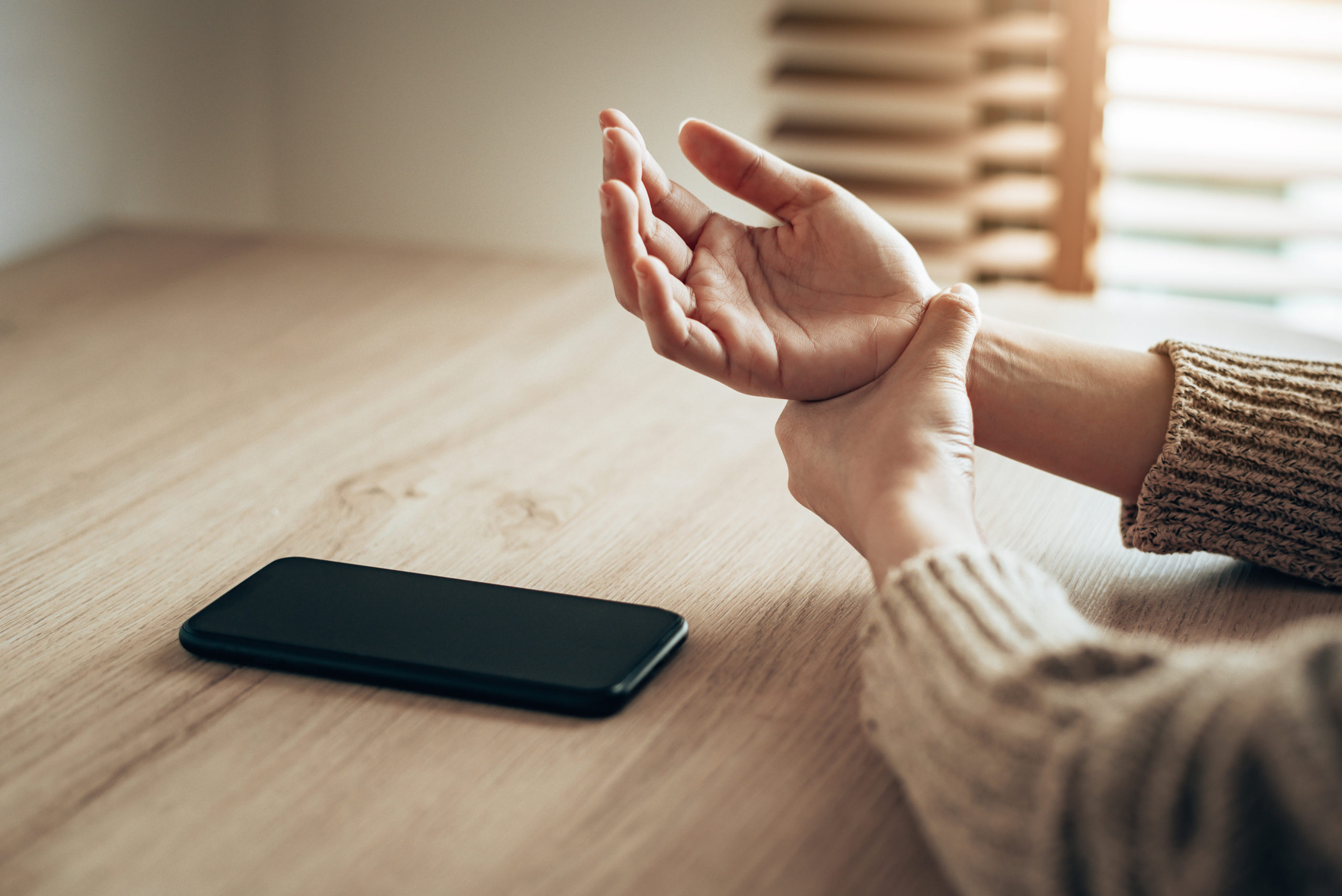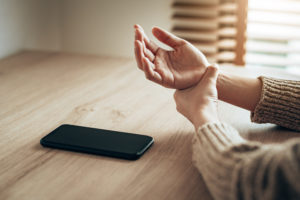

Carpal Tunnel Syndrome is a fairly common condition in the hand that typically presents with nocturnal symptoms of numbness, pins and needles and tingling in the thumb, index, middle and one side of the ring fingers, aggravated by sleeping with a bent wrist.
However, Carpal Tunnel Syndrome can also be caused by repetitive, strong and/or sustained gripping during day time activities and then symptoms might be more prevalent during the day than at night.
The median nerve travels through the carpal tunnel at the wrist/palm level. The carpal bones form the base of the tunnel and the transverse carpal ligament forms the roof of the tunnel. The flexor tendons to the fingers and thumb also travel through this space. The small lumbrical muscles in the hand arise from the flexor tendon to the fingers, and when the fingers are straight the muscles are beyond the carpal tunnel. However, when the fingers make a fist the lumbrical muscles are dragged into the carpal tunnel which may cause compression to the median nerve and symptoms of numbness, burning pain, pins and needles and tingling.
Treatment is similar to nocturnal carpal tunnel. Activity modifications are required to prevent sustained and strong gripping during the day. Splinting, with the inclusion of the finger metacarpophalangeal joints, aims to relieve pressure to the median nerve by preventing a grip posture. This may need to be worn full time initially. Passively stretching the intrinsic muscles can also be helpful. To do this the fingers are placed in a hook position with metacarpophalangeal joints in full extension and interphalangeal joints in maximum flexion. Other treatment options include taping and nerve glides. Your therapist will be able to educate and design a treatment program to work for you.
If you have any questions about Carpal Tunnel Syndrome, please don’t hesitate to get in touch.
